What is it?
Kinesiology is a HOLISTIC (whole person) and COMPLEMENTARY (collaborates beautifully with other treatments) therapy.
A kinesiologist is observing you as a WHOLE BEING in which many moving parts work together to create balance – experienced as a healthy state of being. None of these parts (physical, psychological or ‘energetic’) works alone, they are all interdependent, and in constant communication, to bring you your life experiences. This means that trauma; dysfunction and/or dis-ease in one area can, and will, impact other areas over time.
For example: emotional disturbances will affect physical function and vice versa.
It is not always clear what the origin of our pain is as we can easily become distracted by the symptoms; e.g. back pain, lack of motivation, infertility, social anxiety, inability to orgasm, IBS, etc, and how they are impacting us in our day-to-day. The best part about this is that often when you think you have five different issues they are all linked, like branches of a tree, to one original imbalance (trauma, injury, loss, event etc.).
For example: A physical injury means that you cannot work, this causes you financial and relationship stress which leads to depression. After time the relationship breaks down, you are no longer in physical pain however, you are still depressed and finding it hard to find work you enjoy or to socialise. This can just as easily begin with an emotional event which then manifests into a physical disease/dysfunction.
How does it work?
A kinesiology session is often referred to as a ‘balance’ indicating one of the underlying premises of the modality – the body is innately always seeking to return to homeostasis – to balance. A kinesiologist’s goal is to help you utilise that innate intelligence by locating, and working with, the origin of the issue/s.
Using a technique called ‘muscle testing’, a kinesiologist can literally ‘read’ what your body (physical and/or energetic) is storing. Your body quite literally keeps score of all your life experiences, and, on a cellular level, your ancestors’ also!
It is the ability to communicate directly with your body (and, I would add, your higher consciousness) that allows a kinesiologist to track back from your presenting symptom/s to the origin of your imbalance. In my experience (with over a decade of clinical practice) the original trauma/injury is most likely from early childhood and/or intergenerational trauma, and yes, at times, from unresolved past life trauma.
Once the origin/s of the imbalance has been located this is when ‘the work’ begins. In this case, ‘the work’, refers to whatever techniques and processes the kinesiologist has at their disposal (and, as indicated by the client’s body using muscle testing).
This may include:
- Counselling
- Visualisation, meditation or breathing techniques
- Holding acupressure points
- Chakra balancing
- Sound healing
- Flower essences
- Tapping (EFT)
- Crystal healing techniques
- Oracle cards
- Brain Gym techniques
- Inner Child work
- Journey work
- Eye modes
- Other modalities (e.g. naturopathy, massage, craniosacral)
It is important to mention that whilst all kinesiologists learn the basic muscle testing techniques, the other ‘tools’ in their kit (and what they specialise in) may vary greatly depending on where they studied, and other techniques and wisdom they have gained on their professional, and personal, journey.
Please note: during a kinesiology session you can expect to discuss your current situation and answer questions about your medical and family history, to lie on a massage table (fully clothed), and you may be required to do some basic movements or postural assessments.
What are the benefits?
When I first started practicing as a kinesiologist it was super common for people to come for their first session saying, “I’ve tried everything else, nothing is working, so I thought I’d try this”.
Ultimately whether the pain or dysfunction is physical, emotional or spiritual (yes, that is a thing) it can take a long time to find the underlying cause using ‘conventional’ therapies that focus on one layer, or aspect of, your being (e.g. physical body or body part, mind, emotions, spirituality).
I have had many clients who have been to see this or that practitioner for years, sometimes weekly, and have had some relief, however their pain (physical or psychological) and/or dysfunction, never really goes away. Alternatively they may have tried different types of treatments and had the same results.
A kinesiologist aims to literally help you ‘join the dots’ on what is really going on for you so that you can face it head on. This can help speed up healing work with other practitioners, and/or in conjunction with any other strategies you are implementing along the way e.g. meditation practice, yoga, stretching, herbs, nature walks, workshops, breath work, journaling etc.
This is not to say that kinesiology is ‘better’ than other treatment types, or that it is the only way to get to the root cause of an issue. There are many ways, and honestly, in my experience there is no one magic bullet to ‘fix’ you. What is actually required is for you to follow your intuition/gut around what you need for your healing journey, and who or what you choose to support you along the way.
Please note: It is you, the client who must be ready; ready to do the work, face the fear, release the tears, to move on. If not, real change cannot occur and a practitioner cannot magically ‘fix’ you. For many of us, this is the first stage; working through our resistance to change!
For more information please visit the Australian Kinesiology Association: https://www.aka.asn.au/about-kinesiology


